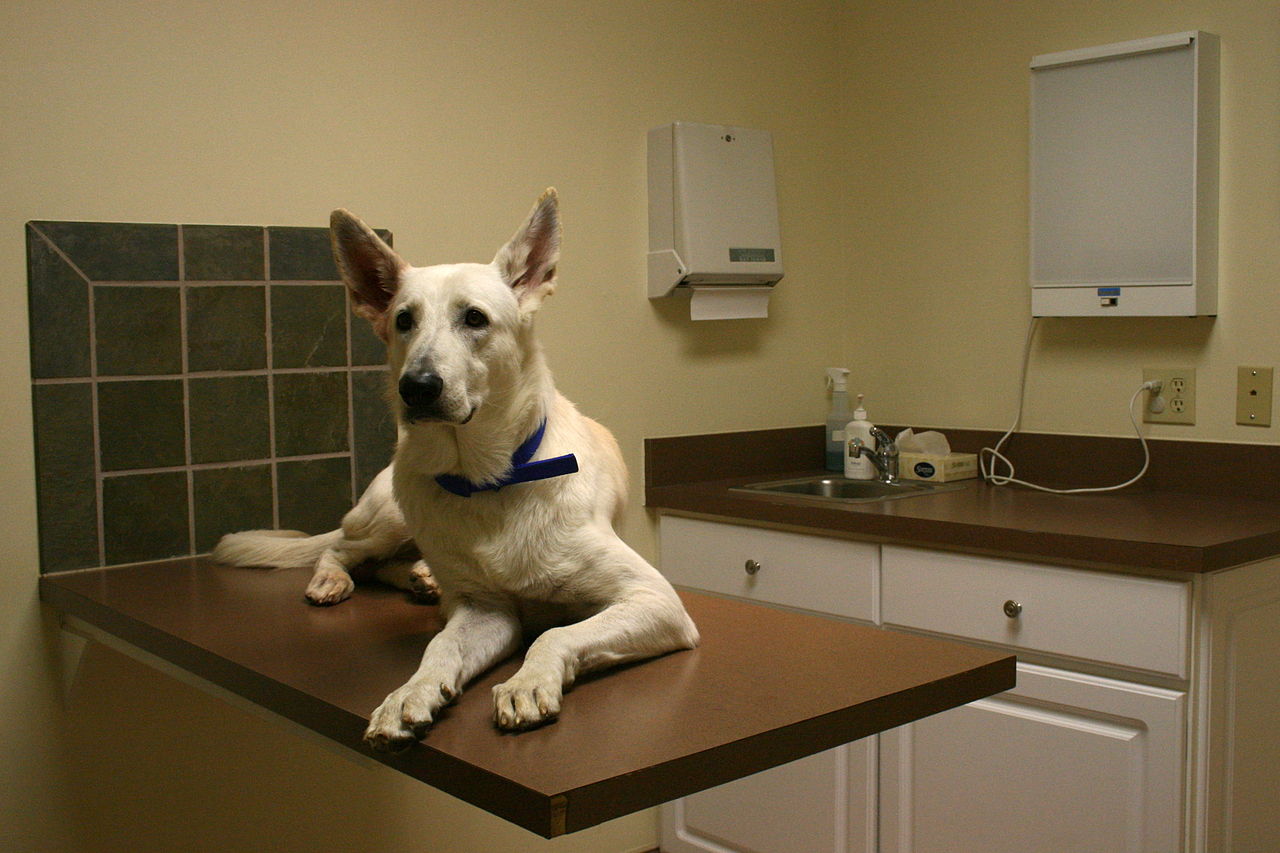This occurs when the stomach twists, trapping air and gases and blocking them from escaping. It’s also known as gastric dilation – volvulus (GDV). This can lead to low blood pressure, damage to internal organs, shock. The stomach can feel very hard to the touch. The dog is very restless, may whimper, may try to […]
Dog Diseases
There are a number of diseases dogs are prone to and I’ll talk about some of them here. I’ll also try to include specific breeds of dog that are prone to certain illnesses and diseases.
I would advise you to be aware of your dog’s normal behavior. Signs of illness can be lack of appetite, decreased activity, weakness, not drinking much, not grooming, bad breath, sleeping more than usual, drooling, vomiting, diarrhea, coughing, trouble breathing, frequent and/or bloody urination. If your dog exhibits any of these symptoms or any behavioral changes and you are unsure of what to do, seek the advice of your veterinarian.
Things you need to know:
The normal color of a dog’s gums is pink. Pale, white, blue or yellow gums, contact your vet at once.
Normal temperature for a dog is 100-102.5 degrees Fahrenheit. Less than 99 degrees or over 104 degrees, contact your vet immediately.
A dog’s heart rate slows and speeds with each breath. This is not abnormal. You can check the heart rate by finding the femoral artery inside the back leg. Small dogs and puppies heart rate is 120-160 beats per minute. Dogs that are about 30 lbs. have a rate of 60-120 beats per minute. The larger the dog, the slower the heart rate.
A dog’s normal respiration rate is 10-30 breaths per minute. Panting can be up to 200 pants per minute.
To check if your dog is breathing, hold a tissue or mirror up to his nose. If there is movement or breath on the mirror, your dog is breathing, but get him to the vet immediately.
Problem signs are using the abdominals to breathe, gasping, loud noises, shallow breaths, difficulty exhaling. Call your vet immediately.
If you have any questions, I’ll be happy to answer them.
Note: Many new pet owners do not know about the availability of pet health insurance. Insurance for your dog is a great safety net to have for unforeseeable emergencies or illnesses. It is also helpful in covering routine shots and exams. Some plans start at just five dollars a month. To compare pet insurance plans in your area check out the link above.

Megaesophagus
The esophagus is a muscular tube extending from the mouth to the stomach. Megaesophagus means enlarged esophagus. Humans, dogs, cats (rarely), ferrets and other animals can suffer from this disease. Dogs suffering with megaesophagus will regurgitate their food. Regurgitation is not the same as vomiting, as it is undigested food that is expelled without retching. […]

Epilepsy in Dogs
Epilepsy is a seizure disorder. It can be idiopathic (unknown origin) or acquired. Acquired epilepsy is usually caused by a head trauma. One idea put forth about what causes idiopathic epilepsy is an imbalance in chemicals that transmit electrical impulses to the brain. The condition may be inherited in the following breeds: Beagles, Dachshunds, Keeshonden, […]

West Nile Virus Alert
According to the CDC (Centers for Disease Control and Prevention), this year, 2012, will be the worst for infections of West Nile Virus. A total of 47 states have reported 1118 human cases. Mosquitoes transmit the disease through their bites to both humans and animals. The mayor of Dallas, Texas has declared a state of […]

Bordetella (Kennel Cough)
Bordetella is the inflammation of the trachea (windpipe) and the bronchi. It is also known as infectious tracheabronchitis. Symptoms are a hacking cough that may or may not produce mucous, nasal discharge and difficulty breathing. If not treated, it can lead to pneumonia. Kennel cough occurs often when boarding a dog in a kennel. The […]

Mast Cell Tumors (Mastocytomas)
Mast Cell Tumors (MCTs) are sometimes misdiagnosed as lipomas (fatty tumors). MCTs are cancerous cells that release histamin and heparin (a blood thinner) which can result in localized swelling, inflammation and allergies. The most common location for MCTs is the skin, but can also be seen in the liver, spleen, gastrointestinal tract and bloodstream. An […]

Wobbler’s Syndrome
Wobbler’s Syndrome is also known as CVI or cervical vertebral instability and may be inherited in dogs. It usually affects large breeds and dogs that grow quickly. Wobbler’s is caused by stenosis (narrowing) of the vertebral canal, the space that contains the spinal cord. Younger dogs, 10-14 months old appear to have a clumsy gait. […]

Vestibular Disease
Vestibular Disease can affect humans and dogs and cats as well as other mammals too. The vestibular system helps our body to navigate the earth. It allows our eyes, hands and legs know how to move, preventing falling. We are able to navigate on all types of terrain without dizziness or nausea. The most common […]

Understanding Arthritis in Cats and Dogs
Humans aren’t the only ones who have to deal with arthritis. Dogs and cats are both susceptible to it as they age. Arthritis is sometimes caused by infection of the joint, but most likely it’s just due to wear and tear throughout the years. Unfortunately, pets can’t explain their symptoms, which can make it hard […]

Spondylosis in Pets
Spondylosis is a degenerative disorder meaning it grows worse with time. It causes loss of spinal structure and function. Bone spurs (osteophytes) form at the edges of vertetrae, sometimes forming bony bridges between them. Usually, the lower back is affected, but it can occur in the neck and anywhere along the spine. Spondylosis is an […]
